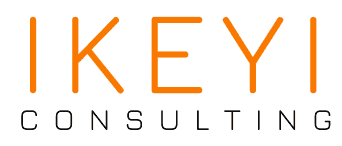Creating A Logo

Creating a logo is a vital aspect of brand identity and marketing strategy for any business or organization. The importance of a logo in the modern business landscape cannot be overstated. Here are key reasons why logos hold such significance:
- First Impression and Brand Identity: A logo often serves as the first point of interaction between a business and its potential customers. It is a visual representation of the company's brand identity, encapsulating its values, vision, and mission in a compact and memorable design. This immediate recognition is crucial in establishing a strong and lasting impression.
- Differentiation and Competitive Edge: In a crowded marketplace, logos help businesses stand out from their competitors. A unique and well-designed logo can differentiate a company from others in the same industry, providing a competitive edge. It’s not just about being visually appealing; it’s about being distinctive and easily recognizable.
- Brand Loyalty and Recognition: Over time, logos become synonymous with the brand they represent, fostering brand loyalty among consumers. A well-established logo becomes a symbol of trust and reliability, encouraging customers to return. Think of iconic logos like Apple or Nike; they are instantly recognizable and evoke a sense of familiarity and trust.
- Marketing and Advertising: Logos play a pivotal role in marketing and advertising efforts. They are used across various platforms – from product packaging to social media – creating a cohesive and consistent brand presence. This consistency aids in reinforcing the brand image and message in the minds of consumers.
- Professionalism and Credibility: A professionally designed logo conveys a sense of credibility and legitimacy. It suggests that a business is serious and committed to its endeavors. A lack of a logo, or a poorly designed one, might suggest amateurishness or a lack of attention to detail.
- Emotional Connection: Beyond its functional role, a logo can evoke emotional responses. Colors, shapes, and fonts all play a role in how a logo is perceived and can trigger different emotions and associations. For example, a logo with soft, rounded shapes and warm colors might evoke feelings of comfort and approachability.
- Visual Storytelling and Symbolism: Logos often incorporate elements that tell a story or symbolize some aspect of the business. This aspect of visual storytelling helps in making the logo more memorable and engaging. It can be a powerful tool to communicate the essence of the brand without words.
- Economic Efficiency in Branding: From a practical standpoint, a logo is an economically efficient branding tool. Once developed, it can be deployed across various mediums at a relatively low cost, especially compared to other marketing tools. This makes it especially important for small businesses or startups with limited marketing budgets.
- Adaptability and Future-Proofing: A well-designed logo should be adaptable and flexible, able to evolve with the company and remain relevant over time. The best logos are those that can be updated or tweaked without losing their essence, ensuring longevity in an ever-changing business environment.
In conclusion, logos are far more than just a graphical representation of a company name. They are a crucial element of brand identity, a tool for differentiation, and a vehicle for emotional and symbolic communication. A well-designed logo not only captures the essence of a business but also plays a significant role in its success and growth.
An email will be sent to the owner. Please allow 24-48 hours for response.
